Wild animals
Discover the world of wild animals with in-depth articles on habitat dynamics, unique adaptations, survival strategies, and their critical role in biodiversity.
65 articles

New
New
You may be familiar with swine, farm animals that are raised domestically all across the world. Perhaps most commonly known as pigs, these animals have been domesticated for millennia. Various domestic breeds have been established during this time. There are also many wild pigs which can look quite different...

Caterpillars are the larval stage of members of the order Lepidoptera, more commonly known as butterflies and moths. It can be difficult to associated the lugubrious and multi-legged caterpillar with its winged adult counterpart. They can be incredibly different in appearance and behavior. Butterflies...

Fish are among the most diverse and adaptable creatures in the aquatic world, undergoing a life cycle that allows them to thrive in oceans, rivers, and lakes. From the moment they hatch as tiny larvae to their transformation into fully grown adults, fish go through several distinct stages of development...
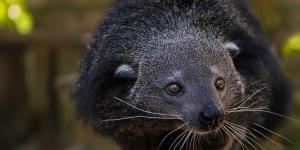
Ever heard of an animal that smells like popcorn? Meet the binturong, also known as the bearcat, a mammal found in the dense forests of Southeast Asia. Despite its nickname, this creature is not related to bears or cats. Instead, it belongs to the viverrid family, making it a distant cousin of civets and...

Herons are aquatic bird species which make up the family Ardeidae. Although morphology can differ according to species, there are some defining characteristics of herons. These include long legs, necks and bills with all herons being relatively tall birds. Their broad wings allow them to fly steadily, something...

Brittle stars are organisms very similar to starfish, belonging to the echinoderm class Ophiuroidea. They are exclusive to marine environments, mostly found on sandy or rocky bottoms, as well as in coral reefs. Their populations are distributed across the world, ranging from very deep ocean trenches to...

Invertebrates are the most misunderstood members of the animal kingdom. Many wonder whether some of the invertebrates we can find in nature are even considered animals. Representing 95% of the animal species currently known to science, they make up 35 of the the 36 phyla in the Kingdom Animalia. Only...
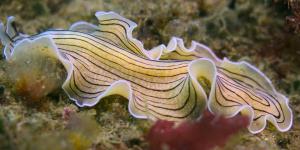
Platyhelminthes is a phylum of invertebrates commonly known as flatworms. We may be aware of other types of bilateral invertebrates known as worms, but it is difficult to group them together taxonomically. For this reason, we have phyla like Platyhelminthes which group animals according to certain key...
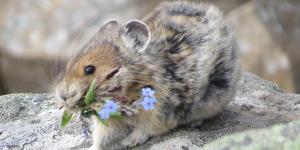
If you've ever watched a rabbit bounding across a meadow or heard the sharp call of a pika echoing through the mountains, you've encountered members of one of nature’s most fascinating mammal orders: the lagomorphs. Though often mistaken for rodents, these unique creatures that include rabbits, hares,...
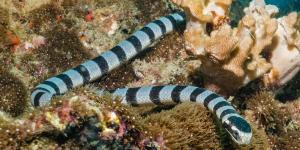
True sea snakes are venomous aquatic snakes belonging to a subfamily of Elapidae known as Hydrophiinae. Another subfamily of sea snake known as Laticaudinae contains one only genus and are known as sea kraits. Hydrophiinae contains all the other sea snakes, as well as many other venomous land snakes....

Aquatic reptiles are reptile species which are adapted to living in freshwater or marine habitats. Some may spend all of their lives in water, but many carry out different behaviors in both terrestrial and aquatic environments. For example, sea turtles are a type of aquatic reptile which normally only...

Cervidae is a family of ungulate mammals which are commonly known as the deer family. While many of the individual species are known as deer, others include elk, moose, reindeer and other animals. Various characteristics define the various cervid types, such as being ruminants and the presence of antlers...

The 1977 discovery of hydrothermal vents revolutionized our understanding of life. Found 2,000 to 4,000 meters (6,500 to 13,000 feet) below the ocean's surface, these geothermal formations create unique ecosystems through chemosynthesis rather than photosynthesis. From towering black smoker chimneys...

Reptiles are grouped into four different orders, the largest of which is the order Squamata. This order contains all the different types of snake. All the other members of this order are known as lizards. Lizards have incredible diversity among their group. The smallest is small enough to stand on the...

The story of comb jellies stretches back to the dawn of animal life itself, some 700 million years ago, when the first multicellular organisms were beginning to emerge from their single-celled ancestors. For decades, scientists believed they understood the base of the animal family tree, with simple sponges...

Sheep are animals of the genus Ovis, a genus which is most noted for the different domestic sheep types. Due to the long period of domestication, domestic sheep have been generated into numerous breeds. There are also wild sheep in this genus, but they have not been domesticated and do not have breeds. All...

While they may appear quite different to other species, moose are actually a type of deer. What makes them different is that they are a distinct species, just how red deer, roe deer and other types of deer have their own differences. This may surprise you if you have seen different types of moose, since...

We may be aware of domestic pigs (Sus domesticus), even that there are many different breeds. However, this is only one species of animal from the family Suidae, also known as pigs or swine. There are various wild species in this family which can live in almost any corner of the world, although they seem...

The group of animals known as seals are known scientifically as pinnipeds. These are semiaquatic mammals which have an almost global distribution. Included within this group are members of the families Otariidae and Odobenidae, known more commonly as eared seals and walruses, respectively. True seals are members...

Badgers are part of the mustelid family, meaning they share common characteristics with mammals such as otters, wolverines and weasels, among others. As with these animals, they are adapted to a carnivorous lifestyle, although diet and other behaviors can vary according to species. Badgers are known for...

While we refer to the common raccoon (Procyon lotor) simply as the raccoon, this is a name which can apply to any member of the Procyon genus. While they differ in terms of distribution, markings and other characteristics, they have many similarities. These include their distinctive paws which have thumbs...

The diversity of reptiles in Spain is one of the richest in Europe, largely due to its varied climate. Spain is a country which has many different geographical features, habitats and climates, meaning many lizards species can adapt to different areas. In addition to lizards such as the gecko, there are snakes...

The saltwater crocodile, often called the "saltie," is the ultimate apex predator. With a legacy stretching back over 200 million years, it has honed its hunting techniques to perfection, ruling freshwater and coastal waters across Southeast Asia, Australia, and beyond. Standing at the top of its food...
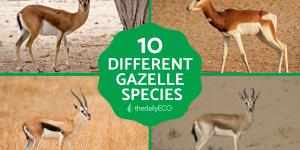
Gazelles are interesting animals in the antelope family. They are known for their speed and agility, which help them thrive in different environments. There are around 15 species found across Africa and parts of Asia, each with unique characteristics and adaptations suited to its habitat.
The following AnimalWised...

Animals, a diverse group of living organisms, play a vital role in ecosystems worldwide. But what exactly makes an organism an animal? Animals, scientifically known as members of the kingdom Animalia, are defined by certain key characteristics that distinguish them from other life forms. Beyond these general...

Hyenas are animals that make up the family Hyaenidae. They are a mammal which seems to take characteristics from various other carnivorous animals to create a unique animal with very particular behaviors and traits. Although they more closely resemble dogs, they are genetically more similar to felines. Known...

When it comes to grouping the different iguana types, there is some confusion over their taxonomic classification. All iguanas are lizards from the family Iguanidae, although some of the members of this family are not iguanas. This is the case with the chuckwalla. The genus Iguana is the most associated...

Ducks are versatile and widespread waterfowl that inhabit a diverse range of environments across the globe. With over 120 species identified, they can be found in nearly every part of the world, from serene lakes and rivers to bustling estuaries and marshes. Ducks vary significantly in size, color, and...

Gastropods are a vast and diverse group of mollusks, commonly known as snails and slugs. Gastropods showcase an extraordinary diversity of form and function. As the only mollusks to conquer both land and sea, these creatures have evolved remarkable adaptations to thrive in a wide range of habitats. Despite...

Moles are small mammals that belong to the order Eulipotyphla and the family Talpidae. They are specially adapted to live much of their lives underground. Most only have poor vision, while some are completely blind. Other physical adaptations such as shovel-like paws allow them to burrow underground....

Jellyfish are known for their ability to sting, maintaining this ability even when they are dead. It is a useful behavior which is used to both protect themselves from predators and catch their own prey. They are able to sting thanks to specialized cells on their tentacles called nematocysts. These cells...

Spain and the rest of the Iberian Peninsula are known for their rich biodiversity. This is partly due to the climactic and geographic diversity the country enjoys. These include sunny Mediterranean coastlines, temperate riparian forests, lush mountain ecosystems and even some desert territories. Despite...

Although many of us can be scared of insects, wasps are known to instill a particularly high level of fear. This is because they have a powerful stinger which can cause significant pain after being stung. For this with a allergy or sensitivity, this can even be life threatening. Their great agility in the...

The Mediterranean is a region of Europe defined by being on the coast of the Mediterranean Sea. This means it is home to many aquatic animals, as well as the terrestrial animals of inland Mediterranean countries. Seabirds are aquatic animals, although they may spend some of their time on land. They cannot...

We can accurately say the difference between predator and prey is that predators hunt prey for food. These are in reference to their respective positions within the food web. These roles are not always clearly delineated, with some predators being prey to others, depending on the circumstances. If we look...

Salps are tunicate marine animals that are characterized by their barrel-shaped and fre-floating habits. They can live singly or in extensive colonies in the pelagic zone of the world's oceans. They are gelatinous in texture and the majority of their mass is transparent, making salps almost imperceptible...

Amphipods are members of the order Amphipoda, small crustaceans that are characterized by having no carapace. They have a global distribution in the world's aquatic environments. Amphipods have been evolving and adapting into various forms of life. We are going to see that they can inhabit different ecosystems,...

Pelagic fish are a group of diverse fish species that inhabit the pelagic zone of the world's oceans. This zone is the vertical column of large bodies of water such as seas and very deep lakes which does not contain solid structures. Within the pelagic zone are different sublayers which differ in various...

The chameleon provides a particular fascination for lizard lovers, being one of the few terrestrial vertebrates which possesses the ability to chane color. Moreover, their pigment-changing behaviors are more advanced than many of the other animals which can change their skin. This is not to say all...

Shoals of fish are more than simply the collective noun for fish. They are a dynamic social group which swim together for many reasons, some of which we are yet to understand fully in marine biology. It is a behavioral phenomenon that sees a large group of fish swimming together. We can deduce some of...

Mammals, characterized by their warm-bloodedness, hair or fur, and milk production, represent a vast and diverse class within the animal kingdom. From the gigantic whales gliding through the oceans to the playful squirrels scampering through forests, mammals exhibit an incredible diversity in size, shape,...

All species and subspecies of gorilla are found in the genus Gorilla. Although there is some debate within primatology, it is generally considered that there are 4 types of gorilla. These are split between two distinct species, both of which have two further subspecies. They are the eastern gorilla (Gorilla...

Humans and chimpanzees are our closest living relatives, sharing an estimated 98.8% of our DNA. This remarkable genetic similarity reflects our shared evolutionary history, tracing back to a common ancestor that lived approximately 6-7 million years ago. This shared ancestry has led to striking parallels...

There is only one species of tiger (Panthera tigris), but there are different types due to the presence of subspecies which include the Bengal tiger (Panthera tigris tigris), the Indochinese tiger (Panthera tigris corbetti), the Malayan tiger (Panthera tigris jacksoni), the Sumatran tiger (Panthera tigris...

Those unfamiliar with the subject may not be aware of the remarkable diversity of bee species worldwide. It's estimated that there are over 20,000 different bee species worldwide, each with its own distinct traits and attributes. These bees are categorized into seven recognized families, each contributing...

In the wild corners of our world, few creatures inspire as much awe, fear, and wonder as the wolf. These magnificent predators, with their piercing yellow eyes and haunting calls, have captivated humanity for centuries. They are the largest members of the Canidae family, and are apex predators in their environment....

Gulls are some of the most common and recognizable birds in the world. They are found on every continent except Antarctica, and they occupy a wide range of habitats, including coasts, lakes, rivers, and even urban areas. There are over 50 different species of gulls worldwide, and they vary greatly in...

Fire coral is a sessile marine animal belonging to the Milleporidae family. Despite their name and the fact they share many characteristics, fire coral are not a type of true coral. Like coral, they are sessile and cnidarian animals, but they have more in common with hydrozoan cnidarians. Their name...

Bird reproduction is a complex and fascinating process that involves a variety of behaviors and adaptations. Just like humans, birds must find a mate, build a nest, and care for their young. However, birds have their own unique ways of doing things. For example, male birds often sing elaborate songs to...

Herbivorous birds, a diverse group of avian species, have evolved to thrive on a diet primarily composed of plant material. Unlike their carnivorous counterparts, these birds have adapted to extract sustenance from various plant sources, showcasing a fascinating array of dietary preferences and specialized adaptations....
